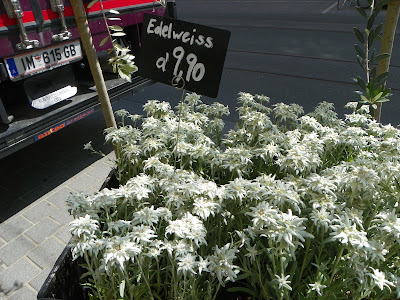 |
| A rare dinner with the 4 of us |
 |
| an even rarer terrace photo of us all |
 |
| gorgeous scenery everywhere you turn |
 |
| the streams were all full of water after a very rainy June and July |
 |
| matthew and christopher trying out a new pizza place for them |
 |
| beautiful days |
 |
| he did the tough hike and we did the easy part |
 |
| snow on the mountain tops in the sella range |
 |
| relaxing |
 |
| just gorgeous rocks everywhere |
 |
| hard to put the camera down |
 |
| view from the passo gardena |
 |
| one of my favorite trails |
 |
| had fabulous local greens every nite |
 |
| a fish appetizer |
 |
dinners were exquisite, baccala tempura
|
 |
| hotel after dark |
 |
| where our room was, stepping out on terrace and taking in that view every morning was heaven |
 |
| zona relax next to great heated outdoor pool |
 |
| view looking toward ortisei |
 |
one of our apple strudel breaks, this one in ortisei
|
 |
| we took a hiking break and drove to Innsbruck one day |
 |
| one of Innsbruck's main streets |
 |
| very tyrolean |
 |
| I loved this tomb of Maximilian I in the hofkirche. Construction took 80 years. |
 |
| tomb had everything, incredibly detailed marble reliefs |
 |
| this was our preferred dining area at he hotel, where we ate every night, in the "stuben" |
 |
| wonderful bronze statues surrounded the tomb. there were 28 of them. |
 |
| they included ancestors and heroes |
 |
| these were all lined up along the side of the tomb |
 |
| choir stalls in the church |
 |
| maximilian's tomb; great wrought iron, marble reliefs, bronze statues and more. Completed in 1572. The kneeling statue of him on top, as well as lovely iron grill dates to 1584. he was never buried here. sad story really. |
 |
| loved this turk on one of the screens. such wonderful detail |
 |
| another wonderful wrought iron door in church |
 |
| part of the royal palace |
Having Matthew and Christopher visiting at the same time in July was the highlight of the summer. Then a week long trip to Dolomites to breathe fresh air, take in gorgeous views and relax wasn't bad either. Matthew went off to attend an economic conference in Canazei. Scott and I took a day trip to Innsbruck was a lot of fun.
Maximilian I was the King of the Romans (also known as King of the Germans) from 1486 and Holy Roman Emperor from 1493 until his death, though he was never in fact crowned by the Pope, the journey to Rome always being too risky. As in the Renaissance his family and the Hasburg empire spend by marriage to various princesses in Spain and France. He was a patron of the arts, science and a reformer of laws. All in all seemed like a good figure from my brief introduction to him.
More photos to follow.































































